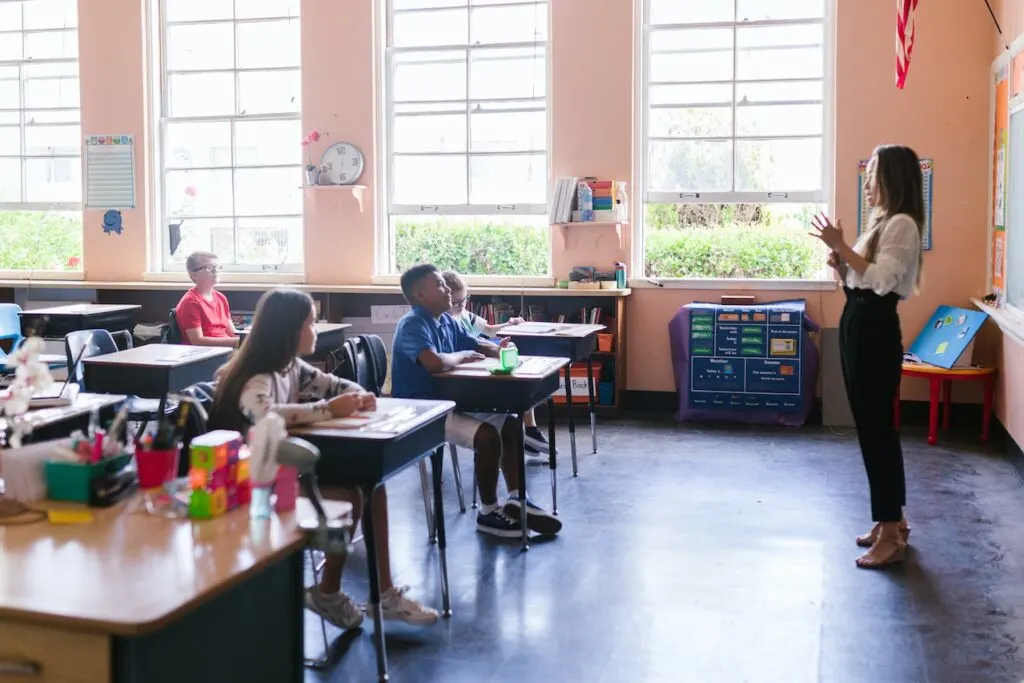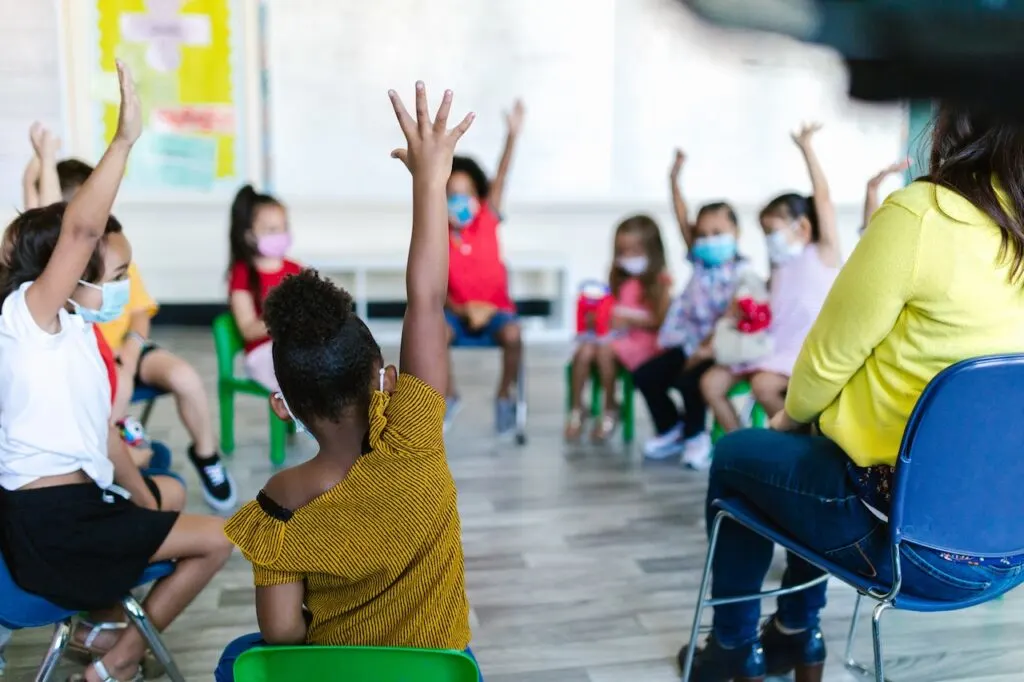In a world that celebrates diversity and inclusivity, ensuring quality education for children with special needs becomes a paramount mission. It is a journey where passion meets purpose, where teachers become beacons of inspiration, and where each child’s extraordinary mind finds its truest expression.

In this blog, we will discover empowering strategies to ensure that every child, with their strengths and differences, receives the education they deserve. Let us embark on this extraordinary adventure, where education knows no limits, and every child’s potential shines brilliantly.
Understanding Individual Needs: Key to Quality Education
When it comes to ensuring quality education for children with special needs, understanding their individual needs is paramount. You must be able to acknowledge the uniqueness of each child which in turn will help you provide individualized care. When you take the time to understand their specific challenges and strengths, you can tailor educational approaches that cater to their requirements.
Promoting open channels of communication is essential for ensuring high-quality education for children with special needs. Through actively engaging with parents, teachers, and support professionals, you can gather valuable insights about the child’s needs. Collaborating with these people enables you to develop effective strategies, address any specific concerns, and make necessary accommodations.
Also, providing quality education for children with special needs requires the use of specialized resources and tools. You must seek out and implement appropriate assistive technologies, adaptive materials, and other aids. These resources can enhance the child’s learning experience, promote independence, and help them overcome barriers to education.
Understanding individual needs is indispensable given the growing number of such students even in countries with extremely developed education infrastructure. For example, the United States provides beneficial services to such students through the Individuals with Disabilities Education Act (IDEA).
According to the National Center for Education Statistics, the enrollment of students aged 3-21 who received IDEA services rose from 6.4 million in the 2010-2011 school year to 7.3 million in the 2021-2022 school year. This significant increase signifies the growing recognition of the importance of catering to the unique requirements of these students in the education system.
Using Supportive Resources and Tools
When it comes to ensuring quality education for children with special needs, there is a large range of resources and tools. One invaluable resource is assistive technology, which can enhance learning experiences and accessibility. From text-to-speech software to communication devices, these tools empower students to participate and excel in the classroom.
The availability of personalized education programs (IEPs) can also help students with special needs. These individualized education plans establish precise objectives, adjustments, and assistance services customized to meet the distinct requirements of each student. When collaborating with educators, therapists, and parents, IEPs promote an inclusive learning environment where children with special needs can thrive academically and socially.
Plus, you can also tap into community resources and support networks. Local organizations, such as parent support groups and disability advocacy organizations, offer valuable guidance and connections. These networks provide a platform for sharing experiences, accessing information, and seeking advice from individuals who have firsthand knowledge of navigating special needs education.
As a parent, you also have the opportunity to leverage the vast array of online resources available to support your child’s special needs education. For example, Sweetstudy.com is one online resource that assists students with their coursework and homework. Many such tools are also available in the online world. These online tools can be an asset in helping your child navigate their educational challenges and excel academically.
However, before fully embracing any resource, you need to exercise caution and ensure it aligns with your child’s specific educational needs. One way to gain more confidence in using Sweetstudy.com or any other online resource is by reading reviews.
By taking the time to explore SweetStudy reviews, you can gather insights from other parents and students who have utilized the platform, helping you make an informed decision about its suitability for your child’s needs.

Creating Inclusive Learning Environments for Special Needs
The foundation of establishing an inclusive learning environment for children with special needs lies in understanding their distinct capabilities and obstacles. By acknowledging their strengths and weaknesses, you can customize the educational setting to cater to their specific requirements. This may include adjusting instructional approaches, offering assistive technologies, or making physical environment adaptations.
Also, promoting a feeling of inclusion and embracing children with special needs is crucial in ensuring quality education for children with special needs. You can achieve this by promoting inclusivity and diversity within the classroom. Encourage peer interaction and cultivate an atmosphere of empathy and understanding. Celebrate the achievements of all students, including those with special needs, to create a positive and supportive learning community.
Effective collaboration and communication play a vital role in delivering inclusive education. You should cultivate a strong collaboration with parents, guardians, and other professionals involved in the child’s welfare. Share information, exchange insights, and actively involve them in decision-making processes.
Creating inclusive learning environments for special needs is important to ensure quality education, as research from the University of North Dakota highlights. According to a recent study, the inclusion of students with disabilities in general classrooms has a positive impact on all students, promoting kindness, understanding, and compassion.
Plus, special education students benefit greatly from inclusion, experiencing enhanced confidence, social skills, and a stronger sense of belonging. Comparing the progress of students in general classrooms to those in resource rooms with alternate curricula, a study revealed that students in inclusive settings excelled, making greater strides in reading and math.
Notably, students in general classrooms also achieved 100% of their Individualized Education Program (IEP) goals, surpassing the 90% achievement rate of their counterparts in alternate curricula. These findings show the importance of inclusive learning environments in providing quality education for children with special needs.
Collaborative Approaches for Quality Education in Special Needs
Utilizing collaborative methods is another crucial part of ensuring quality education for children with special needs. You can start by establishing open communication between parents, educators, and specialists. This will ensure a comprehensive understanding of the child’s unique needs while also creating a unified support system.
Be sure to incorporate a multidisciplinary team that includes teachers, therapists, and other professionals who all work together to address all different aspects of the child’s development. Having regular meetings and making sure to share information among team members will also ensure a coordinated approach to education.
Additionally, promote inclusive practices within the school environment. Encourage mainstream teachers to receive training on special needs education, which will empower them to adapt their teaching methods and accommodate diverse learners. This inclusive approach supports a sense of belonging and enhances the overall quality of education for children with special needs.
According to a recent study published in ScienceDirect, collaborative approaches for quality education in special needs are highly effective. The research findings suggest that when teachers collaborate within the school setting, it can result in improved academic performance among students. Recognizing this, collaborative initiatives are purposefully organized in secondary schools, with the aim of enhancing the quality of education for students with special needs.
When you create a seamless collaboration among teachers, therapists, and specialists, these initiatives create an environment where expertise can be shared and innovative approaches to instruction can be developed. As a result, students with special needs receive the support and individualized attention necessary for their educational success.

Summing Up
Ensuring a quality education for children with special needs requires a collaborative approach that involves parents, educators, and specialists.
When you embrace the strategies mentioned in this article, you can create a supportive and inclusive environment for these students. These strategies can help you provide tailored support and individualized attention needed to empower children with special needs to thrive academically and reach their full potential.
Together, we can ensure a brighter future for every child, regardless of their unique abilities or challenges.
